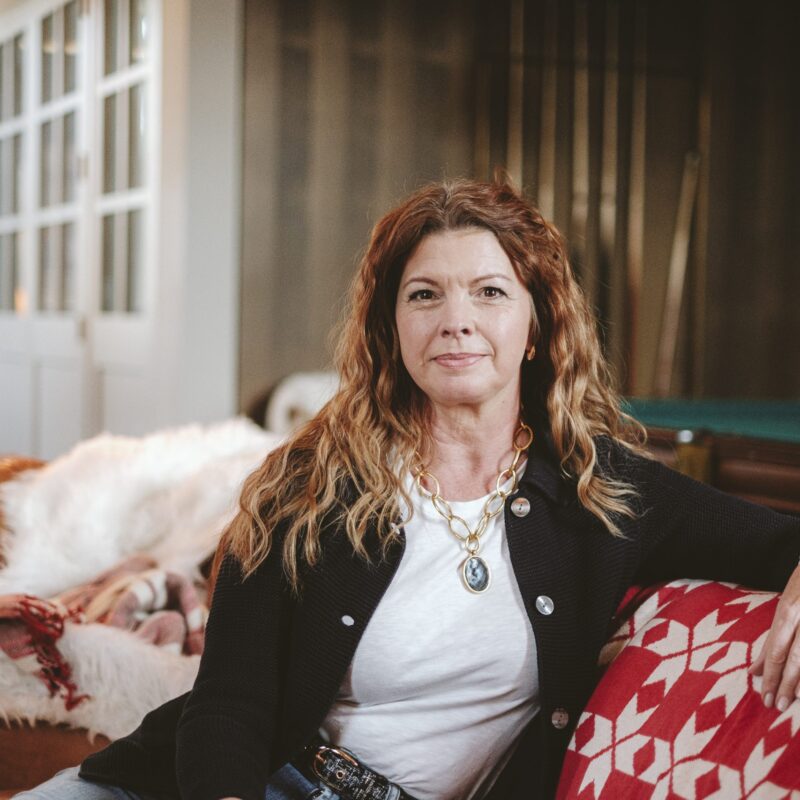|
SEE MORE • For a complete photo gallery of the images from this month’s feature, click the "Photo Gallery" link at right. • For a slideshow of the project’s before images, click here. |
In a neighborhood like Fifeville, every old house is a potential dilemma. Many homes are in rough shape, and the neighborhood’s prime location between Downtown and the Corner can create economic pressure to replace them with newer, more lucrative housing stock. There are tricky social issues at play, and the look of the streets—tight avenues lined with narrow frame and stucco dwellings—is a fragile reminder of city history.
One solution: Preserve and update. Gate Pratt, a Charlottesville native doing business as Limehouse Architects, has completed a series of renovations that aim to honor the history of each house and its surroundings, while updating with modern touches and a sustainably-minded thriftiness. “The house has to have fallen down before you can’t save it,” he says.
One of his projects, an early-twentieth-century stucco house on Nalle Street, was condemned by the city when Pratt, living nearby at the time, came upon it. “There were seven refrigerators on the porch,” he says. “It was referred to as the Refrigerator House. It was obvious when we walked in what kind of work it would need.” His mother-in-law Roulhac Toledano and brother-in-law Macon Toledano bought the house and Pratt managed the renoavtion.
Pratt was no stranger to that “kind of work.” He’d overseen full renovations before, and not only could he see that the house was well built, he felt that preservation and economics both dictated fixing up rather than tearing down. “You do these renovations and it is a savings over building a new house,” he says, adding that teardowns become “like gaps in your teeth” in the context of a street. “As a demonstration of saving old houses in the city, arguably we should be investing more in these old houses.”
Building continuity
The Refrigerator House, its construction date unknown—Pratt says it was sometime between 1890 and 1908—deserves a new moniker since its big facelift finished in 2007. It’s now a spiffy three-bedroom family home fronted by a black iron fence and trim young plantings, a standout on the block in its light-pink coat of paint.
|
A cabinet was reclaimed from an 1850s Amherst County mansion. |
Longtime locals, if they’re paying keen attention, might realize that Pratt slightly changed the arrangement of windows on the gabled front façade, but otherwise the house is faithful to its own history and that of its neighbors. “It’s a continuity for the neighborhood,” says Pratt. “The families who lived in this house in the past can see it. A woman stopped by who lived here in the ’50s.”
Behind that well-preserved façade, the work necessary to save the house was extensive: rebuilding the foundation, replacing the floor structure, redoing electrical and plumbing, and stripping walls to the studs. The house had been broken into apartments, so a new floor plan had to be drawn, too. And there was a major two-story addition: a master suite over a kitchen, grafted onto the back of the house. Pratt explains that this was only the latest of four or five phases of growth over the house’s lifespan. “We added our own piece of the history,” he says.
Rescue and re-use
In truth, they added pieces of many histories, by using salvaged materials from handrails to skylights. Walking through the house—currently a rental, and getting heavy use from a family with triplet toddlers—Pratt can rattle off an impressive list of sources for his rescued materials. Among other scores, he used rafter tails from UVA’s Beta House, doors from the Habitat Store, ironwork from the Albemarle County Courthouse, and antique light fixtures from Roulhac Toledano’s collection (she is an author, preservationist and architectural historian).
“The house was eclectic to begin with,” says Pratt. That made it fertile ground for a vision generous enough to accommodate both a reclaimed cabinet from an 1850s-era mansion in Amherst County, its hardware polished and paint worn by generations of hands, and sleek appliances and ceiling lights that bring a contemporary urban feel to the brand-new kitchen.
In this context, even closets and widened staircases count as modernization. “In all these rooms there are subtle [changes] to make it feel right,” Pratt says. In each front bedroom, he added two closets, creating a nook space between that’s perfect for a dresser or changing table. He also raised some ceilings and, on one bedroom, added windowed double doors to let in more light. Still, the feel of historic preservation dominates here, with more modern elements taking a complementary role.
The new master suite might be the renovation’s crowning moment. There, a high cathedral ceiling and exposed beams lend a sense of grandeur to what is not, in actuality, a very large room. A cantilevered balcony gives a view toward Carter’s Mountain (a vista which, Pratt says, “hasn’t changed that much” since the house was first built) and, from the exterior, lends a Charlestonian touch. Old-fashioned tile connects the newly constructed bathroom to earlier eras.
|
“The house was eclectic to begin with,” says Pratt; from that starting point, the renovation brought in a diverse collection of reclaimed materials. |
The context of green
The Nalle Street renovation includes some green features that have become common in many residential projects: high-efficiency windows, spray-in foam insulation, an on-demand hot water heater. Pratt calls these “green strategies we would have done even if we built a new house.” But equally relevant to the project’s sustainability is the wider lens through which it’s viewed: first of all, the decision not to send an old house to a landfill, and secondly, an awareness of how the property might fit into a larger urban-planning vision.
Macon Toledano also owns a house next door, and Pratt thinks that eventually the space behind and between the two homes could be a site for more housing. The goal, he says, would be to “keep everything in the city and close to Downtown. If you can keep people out of their cars, you’ve done a good thing.”
Urban on Oak
Compared with the Nalle Street renovation, with its family-oriented layout and airy feel that harkens back in time, another of Pratt’s renovations demonstrates a different vision more akin to the urban loft style. This 1925 house, pressed against the sidewalk with double front porches overlooking Oak Street, has a funkier, more vertical feel and a floor plan suited for a single person or a couple.
|
One bedroom got windowed double doors to let in more light. |
When Pratt, again partnering with his in-laws, took this one on, it was derelict, though not condemned, and had been covered in asphalt shingle siding. “You had to really use your imagination,” Pratt remembers. A two-over-two floor plan became, in the 2005 renovation, an open common space on the first floor and a very large single bedroom, complemented by a large nook area, upstairs.
This house, like the Nalle project, received a new kitchen, new flooring, and period light fixtures sourced by Roulhac Toledano. And here, too, salvaged materials provide continuity and interest: Hallway ceilings are faced with wide, dark wooden planks that came from a New York church; kitchen counters are made from reclaimed cypress beams.
Upstairs, the bedroom—large enough to break into two if future occupants desire—is defined by an exposed, whitewashed roof structure in lieu of a ceiling. “This really makes the house,” says Pratt, pointing out evidence of a long-ago fire on some of the rafters. Even as a contemporary element—a skylight—brightens the space, the rough texture of the rafters and joists is a visible, tangible connection to the past.
Pratt says his commitment to sustainable building grew between this project and the Nalle Street project (the later has heftier insulation, for one thing) and is slated to reach new heights with a new project on Dice Street. There, Pratt is partnering with owner/developer Jane Covington, herself a veteran at Fifeville renovations, on a new construction project meant to be LEED-certified.
“I’m not always the strictest preservationist,” says Pratt. “But when it comes to restoring these old houses, I’m all for it.”








